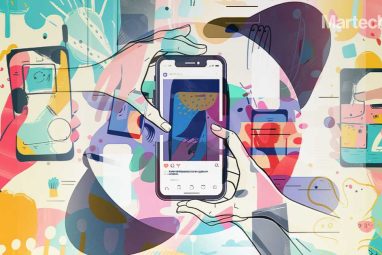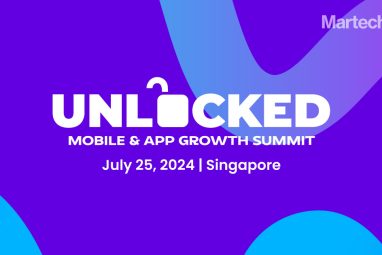AI-Led Recommendations: 5 Secret Strategies to Unlock Personalisation at Scale
The application of personalisation in marketing has undergone a significant shift over the last 5 years. It all started with referring to customers’ by their first names and wishing them on their birthday or anniversaries. But, that degree of personalisation just doesn’t cut it anymore. Your customers continue to grow smarter, more informed, and demanding. […]
The application of personalisation in marketing has undergone a significant shift over the last 5 years. It all started with referring to customers’ by their first names and wishing them on their birthday or anniversaries. But, that degree of personalisation just doesn’t cut it anymore.
Your customers continue to grow smarter, more informed, and demanding. In fact, according to an Infosys report, 31% of surveyed customers wished that their online shopping experience was more personalised than it currently is.
They require greater context, greater relevance, a higher value for time, effort, and money spent. And, as a customer-centric brand, you need to work that much harder for their mindshare, screen-share, and eventually; wallet-share.
Your customers now expect an end-to-end personalised customer experience, right from the first time that they land on your website or launch your mobile app. This is evidenced by a Deloitte study where 36% of surveyed customers expressed an interest in purchasing personalised products or services.
Personalisation is no longer limited to your marketing campaigns. Your campaigns are merely critical pieces in your broader personalisation strategy.
What is the Foundation for Personalisation?
You need to integrate your personalisation strategy into your multi-channel marketing hub to deliver truly hyper-personalised customer experiences at scale – tailor-making experiences at an individual level across various digital touchpoints such as websites, mobile apps, email, and social media.
And, all this needs to be driven in real-time by harnessing your customers’ demographic, geographic, device-related, and behavioural data along with their intent to search, click, add-to-cart, or complete transaction.
This places a premium on getting your customer data unified, and right. Gaining a live 360-degree view of what individual customers are doing across your website or mobile app is paramount, which is why, depending upon the scale and budgets that you operate at, you need to think beyond traditional CRM tools.
You may want to evaluate a data-driven multi-channel marketing hub or a standalone Customer Data Platform (CDP) that can help you stitch data-points gathered across both online and offline sources.
How Can Personalisation Uplift Marketing Strategy?
Whether you are an e-commerce, online travel, OTT, fintech, edtech, etc. website or mobile app; a powerful personalisation platform can help you boost conversions by 8-13%. Along the way, it gives you the chance to drive greater customer engagement, repeat purchase behaviour, loyalty, and retention.
Also Read: The Rise of Advanced Personalisation in Marketing Strategies
Here’s how you can tailor-make 1:1 customer experiences:
1. Personalise the navigational flow across your website:
Why show the same website to all your first-time visitors and repeat customers? It might be easier, but it’s certainly not going to help you drive higher conversions.
Leverage your customer’s browsing behaviour and purchase history to customise how you want them to navigate across your website. The more customised your navigational journey, higher the chances of you directing them towards a conversion event, sooner.
You can also experiment with dynamic website elements such as graphics, banner images, and CTAs to optimise the persona-based viewing and navigation experience.
Use Cases:
- E-Commerce: Create persona-based website home page viewing and navigation experiences based on gender, geolocation, or type of customer (first-time visitor or repeat customer)
- Travel: Showcase flight deals or travel packages based on the current weather, seasons, or most-commonly-booked travel destinations
2. Personalise the product search experience
Once you’ve grabbed the attention of your customers through personalisation on the home page or specific landing pages across your website, you should also work on improving their search or browsing experience.
Now instantly complete the search entry in progress or provide relevant product recommendations when your customers are completing a search query. This would be driven by past search terms recorded, intent to purchase, and most commonly made searches in a particular product category. It comes down to a simple objective – reduce all possible points of friction in the customer journey that increases the chances of a drop-off.
Use Cases:
- E-Commerce: Instantly populate recommended products when your customer is searching for a particular product category or specific item, along with similar search results
- Banking: Provide live recommendations or redirections towards the FAQ section when customers’ make product or process-related inputs
Also Read: Customer Loyalty Comes With Personalisation
3. Provide contextual recommendations based on predictive analytics:
Harness the capabilities of AI to do all the heavy-lifting by analysing large sets of historical data to generate highly personalised product or content recommendations; that cater to individual customers.
AI allows you to consider various behavioural parameters to accurately predict the probability of each customer browsing, adding to cart, or purchasing a particular item or related products.
You can break down the propensity to search for, click on, add to wishlist or shopping cart, or purchase from various product categories and specific products.
Based on these insights, your personalised recommendations can be displayed dynamically on your website or mobile app or be offered as timely, triggered communication across channels such as web messages, push notifications, or email.
You can optimise the marketing channels that you want to deploy to deliver these product recommendations; depending on past interactions of every customer to such campaigns.
You can optimise the marketing channels that you want to deploy to deliver these product recommendations; depending on past interactions of every customer to such campaigns.
Use Cases:
- OTT: Provide video or audio content recommendations based on your customers’ historical and real-time viewing/listening, watch list, favourite genres/artists, etc.
- Food Delivery: Recommend relevant restaurants or trending offers within a customers’ geographic vicinity based on his/her preferred cuisines, frequency of app launch, most common time to place orders, etc.
Also Read: AI-powered Personalisation Will Have a Big Impact on Marketing
4. Curate a personalised boutique:
Unlock the true potential of your personalisation strategy by going one step further. Create a personalised virtual storefront for individual customers. Not only would this contain product or content recommendations with the highest probability of purchase, but it would also continue to get dynamically refined based on customer eyeball data.
This means that this specially curated list of products, songs, videos, or articles, etc. would account for those recommendations that work and those that don’t and refresh automatically – based on how many seconds a customer spends hovering over an item. These time-stamped signals loop back into the AI engine, making it smarter and more intuitive.
Think of how Spotify or Netflix does this. Your playlists and watchlists continue to evolve based on every single session of content consumption.
Use Cases:
- E-Commerce: Develop a personalised storefront of highly customised product recommendations that a customer is most likely to buy. Drive traffic to this section through a banner ad on the home page
- OTT: Create customised playlists or watchlists based on historical and real-time consumption patterns to increase average session lengths and platform stickiness
5. Reduce drop-offs = Reduce conversion cycles:
Direct repeat website visitors towards conversion by highlighting the exact product that he/she has viewed in his/her last recorded session – on a pre-defined section of your website, mobile site, or mobile app page.
This will help you increase top-of-mind recall and the chances of purchase during the current session!
Use Cases:
- E-Commerce: Highlight targeted offers on products based on past products viewed or items abandoned in carts at a specific space on your website home page
- EduTech: Remind repeat mobile app users to complete their pending courses by showing them a progress bar right where they are most likely to see it on app launch during their next session
Is Personalisation the Way Forward?
Yes, and yes.
According to the Gartner Hype Cycle for Digital Marketing and Advertising, 2019; “innovation profiles like personalisation engines are maturing rapidly as marketing leaders prioritise investments in this area.”
Delivering a truly omnichannel customer experience is no longer a pipedream, and scaling customer delight consistently is a function of your data-driven vision, creativity, and optimisation.
Remember – the better you know and understand your customers, the more effective your personalisation strategy, powered by AI, will be.








































































































